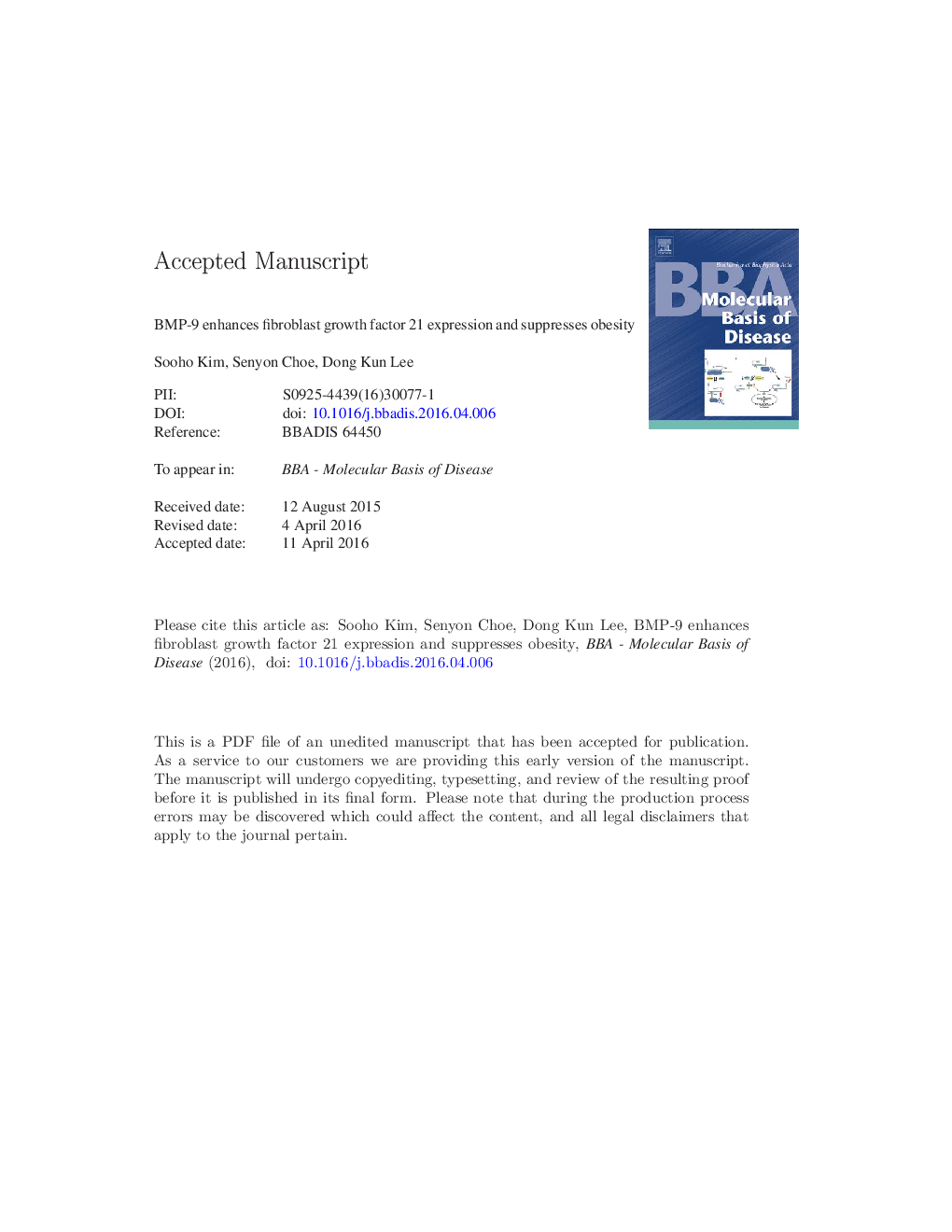| Article ID | Journal | Published Year | Pages | File Type |
|---|---|---|---|---|
| 8259196 | Biochimica et Biophysica Acta (BBA) - Molecular Basis of Disease | 2016 | 31 Pages |
Abstract
Although BMP-9 has been reported to induce browning of white adipose tissues (WATs) and suppress high fat diet-induced obesity, detailed molecular mechanism needs to be further elucidated. We report here that administration of MB109, a recombinant derivative of human BMP-9, into obese mice enhanced gene expression of fibroblast growth factor 21 (FGF21), a metabolic regulator, and alleviates a spectrum of pathological symptoms due to high fat diet-induced obesity. In addition, periodical injection of MB109 (500 μg/kg/week) reduced an amount of lipid droplets in the liver, serum levels of alanine aminotransferase (ALT), and total cholesterol. These results indicate that MB109 is also effective to treat obesity-mediated non-alcoholic fatty liver disease (NAFLD).
Related Topics
Life Sciences
Biochemistry, Genetics and Molecular Biology
Ageing
Authors
Sooho Kim, Senyon Choe, Dong Kun Lee,
